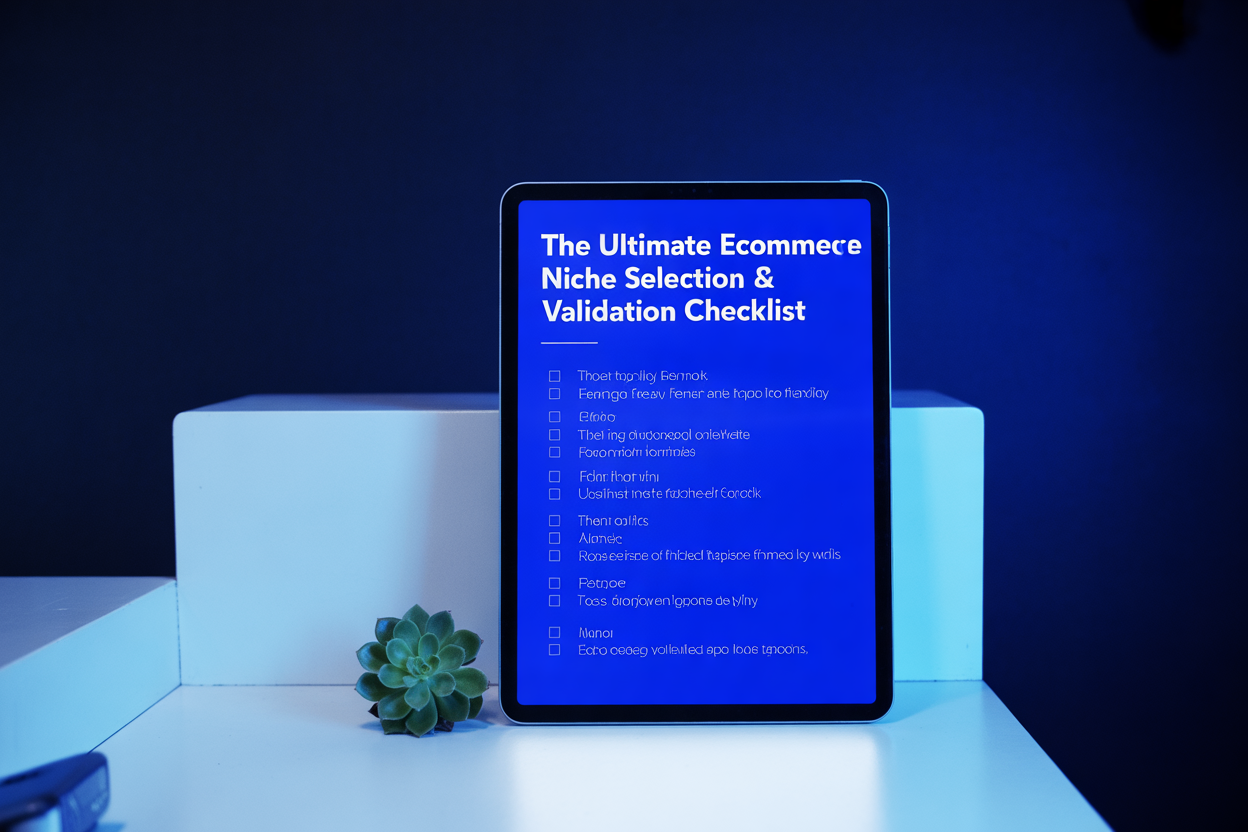A step-by-step guide to pick a profitable niche and test it before you scale
Choosing the right niche can make or break your eCommerce business. The good news? You don’t need to guess. With systematic validation and data, you can select a niche with high potential and avoid costly mistakes.
Use this checklist as your roadmap from idea → testing → decision. I’ll walk you through every step.
Niche Validation Checklist
Below is the full checklist. After that, I’ll explain each point and how to act on it.
| Step | What to Do | Why It Matters / How to Measure |
|---|---|---|
| 1. Brainstorm ideas aligned with your interest / domain | List 5–10 niche ideas you care about | Passion helps you stick with it and build expertise |
| 2. Research demand & trend data | Use tools like Google Trends, keyword tools (Ahrefs, Ubersuggest), trend reports | Check if interest is growing (or at least stable) |
| 3. Analyze competition & gaps | Study existing brands, online stores in that niche | Look for underserved sub-segments or weak competitors |
| 4. Estimate profit margins / unit economics | Calculate product cost + shipping + duties + marketing vs possible selling price | Ensure there’s room for profit |
| 5. Assess sourcing & logistics feasibility | Can you reliably get inventory? What are shipping/customs costs? | Some niches fail because logistics is too complex |
| 6. Validate demand with minimal investment | Run ads, landing pages, pre-orders, small test batches | Real orders or clicks are stronger signals than guesses |
| 7. Check repeatability / retention potential | Are the products consumables or accessories? Can customers come back? | Recurring / repeat purchases help build long-term revenue |
| 8. Evaluate regulatory / compliance risks | Especially for food, cosmetics, health, electronics | Certifications, safety standards, import rules can block you |
| 9. Define a differentiation / unique angle | Branding, packaging, service, bundles, niche focus | This is what helps you compete even in “hot” niches |
| 10. Pilot & monitor performance | Launch small, track metrics: CTR, conversion, ROI, retention | Decide to scale, pivot, or drop based on data |
How to Use the Checklist – Step by Step
1. Brainstorm with purpose
Start with what you already care about or know, hobbies, industries you’ve worked in, trends you find interesting. This gives you motivation and helps you understand customers.
2. Research demand & trend data
- Use Google Trends to see how search interest has evolved.
- Use keyword research tools to estimate search volume.
- Check trend / market reports (e.g. “top trending niches 2025”) GemPages+1
You want niches where demand is not sharply declining.
3. Analyze competition & find gaps
- Search for existing stores / sellers in that niche.
- Identify what they do well, and where they fall short (price, quality, service).
- Look for narrow sub-niches they are ignoring.
4. Estimate profit margins / unit economics
- For each product idea, estimate your landed cost (product + shipping + customs + handling)
- Then determine what price customers would reasonably pay
- The difference is your gross margin. If margin is too low, it may not be viable.
5. Assess sourcing & logistics feasibility
- Find potential suppliers (local / overseas)
- Request samples, check quality
- Check shipping times, costs, packaging, minimum orders
- Evaluate risk (damaged shipments, delays)
6. Validate demand with minimal investment
- Run a small Facebook / Instagram / Google ad for a landing page
- Offer pre-orders or collect email interest
- Use small test inventory
- Use “test SKUs” rather than full line
7. Check repeatability / retention potential
- Consumable / refillable products, accessories (with upgrades, parts) are good for retention
- One-time luxury items might be harder to scale unless you constantly find new customers
8. Evaluate regulatory / compliance risks
- For cosmetics, foods, supplements: check ingredients, halal status, import rules
- For electronics: safety certifications, warranties
- For children / baby products: stricter standards
9. Define a differentiation / unique angle
Your niche might be “modest activewear,” but why? Maybe local fabrics, inclusive sizing, eco-friendly materials.
This gives you a competitive edge.
10. Pilot & monitor performance
- Launch your test campaign
- Monitor these key metrics:
• Click-through rate (CTR)
• Conversion rate
• Cost of acquisition (CAC)
• Return on Ad Spend (ROAS)
• Retention / repeat purchase - After a few weeks, decide whether to scale, tweak, or abandon


Leave a Reply